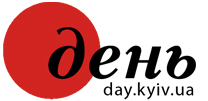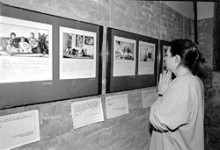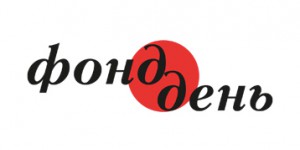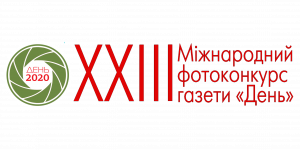Kyiv’s PA Gallery opened German art photographer Bernd Lasdin’s Change of Epochs exhibition on December 19, featuring portraits made in East and West Germany. The exhibit was organized by the German Cultural Center of Kyiv’s Goethe Institute. According to the Institute Director Johannes EBERT, the term of the exhibit (December 20, 2000 to January 16, 2001) was chosen specially; Germany marked the tenth anniversary of its reunification this year and Ukraine will mark its independence centennial in the coming year. Lasdin’s photos portray people living in both parts of Germany, differing by character and social status (construction workers, physicians, pensioners, unemployed), age, and family status. We see the same faces before reunification and ten years later. Every character was photographed in his favorite environs (more often than not at home, in the most favored place). Every caption is written by the person photographed, producing scenes from real life embodied in words. All this makes it possible for one to see the changes in German life during the last decade. Why should we Ukrainians take an interest in problems facing another nation so very different from our own? Larysa Ivshyna, editor-in-chief of The Day, noted, addressing the opening ceremony, that the photographs “will help us assess our own changes and how well we are using our own chances.” Indeed, Bernd Lasdin’s photo documents do not strike one as alien, because the Germans, having experienced a turning point in their history, after their country became whole again, appear to live a life dramatically resembling ours, with all positive and negative aspects. Some lose their jobs, others lose their close and dear ones, still others become parents. In a word, life is portrayed the way it is, with no frills. Of course, Lasdin’s photo discourse leaves people with a variety of impressions, far from always positive. One caption reads, “We have changed and simultaneously remained the same. The old system was based on falsehood. Hopefully, we did not lie to ourselves. The new system is based on fraud. Hopefully, we are not cheating on ourselves. Conclusion: trust no state, see if you can trust your family,” seems a good resume and a lesson to us all. And another lesson: “The past couple of years have been trying at times, but love can help overcome almost anything.”
COMMENTARY
Oksana ZABUZHKO, writer:
The very idea of such comparative visual analysis has long been discussed. With regard to Ukraine, it was first voiced by several Americans with their project called Ukraine Ten Years Ago, Ukraine Today, based on photo contrasts. In fact, similar projects have emerged in other countries. Of course, the most interesting ones originate from countries that have experienced crucial turning points. Ten years ago, it was a different country, different mentality, different specifics, then suddenly — the main conclusion, at least concerning this exhibit, is that people remain the same. Whatever changes occur in the state machine, they cannot make a strong impact on people’s life; man appears not as dependent of social institutions as these institutions assume. Here lies the great victory of humanism and belief in the twenty-first century.
Andrei KHALPAKHCHI, Director General, Molodist Film Festival:
I have always been interested in photography, primarily not in terms of art but as a means of recording reality. I happen to know something about the situation in Germany. I visited precisely as they were tearing down the Berlin Wall, when there was general euphoria, when Germans happily moved from East to West Berlin. Then, three years later, I was told a very good anecdote illustrating East-West German relations. Two Germans, one from East and the other from West Germany, are in a train compartment. The East German says, “We are a one people now.” The Western German replies, “So are we.” Indeed, what has happened over the past decade? Getting rid of the old mentality and accustomed to a new way of life turns out anything but easy. And the same is true of integration into modern social processes. It is a good example for Ukraine, because we are accustomed to jumping from one social formation to the next in a revolutionary way. This exhibit offers documentary proof that joining the normal civilized world is an extremely complicated process. On the other hand, it exposes all the problems facing that civilized world. We are also building ourselves fetishes (now we say that everything is good in the West). This exposition shows, very simply but in depth, precisely how difficult the transition from one system to the next really is and simultaneously how unimportant it is to achieve understanding, so we can share our European home. Current history should be recorded not by way of some global actions, but this way, using compact exhibits showing what is happening to us and the road to the civilized world.







